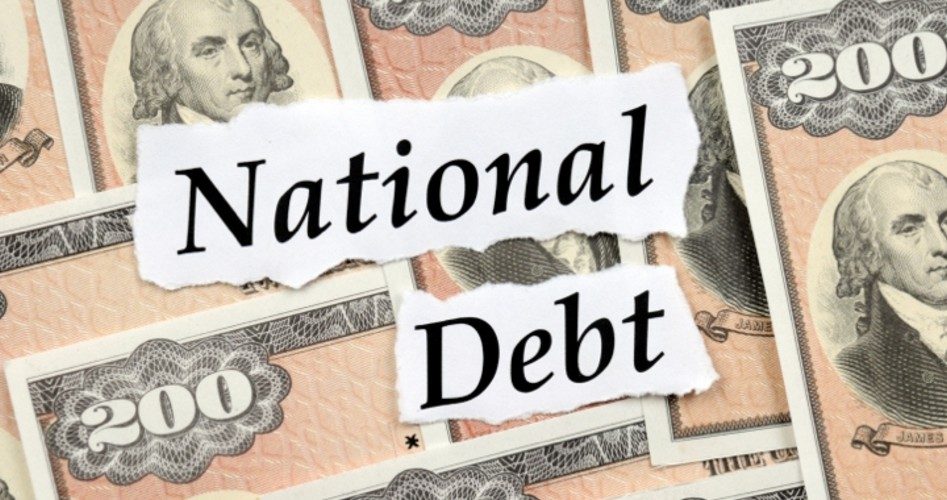
Podcast: Play in new window | Download ()
Subscribe: Android | RSS | More
The Treasury Department announced on July 29 that the federal government is scheduled to borrow nearly $1 trillion ($955 billion) this fiscal year. This will be the greatest amount of borrowing in six years, and a large increase from the $519 billion the federal government borrowed last year.
“We’re addicted to debt,” the Washington Post quoted Marc Goldwein, senior policy director at Committee for a Responsible Federal Budget. Goldwein blames both political parties for increased borrowing.
Using the Treasury Department’s terminology, the department’s current estimates of “privately-held net marketable borrowing” for the July-September and October-December quarters this year are as follows:
• During the July-September 2019 quarter, Treasury expects to borrow $433 billion in privately-held net marketable debt, assuming an end-of-September cash balance of $350 billion. The borrowing estimate is $274 billion higher than announced in April 2019. The increase in borrowing is primarily driven by changes in cash balance assumptions.
• During the October-December 2019 quarter, Treasury expects to borrow $381 billion in privately-held net marketable debt, assuming an end-of-December cash balance of $410 billion.
The Treasury Department report noted that during the April through June quarter, Treasury borrowed $40 billion in privately-held net marketable debt and ended the quarter with a cash balance of $264 billion.
“It is terrible. Those deficits and the debt that keeps rising is a serious problem, not only in the long run, but right now,” Harvard economist and former Reagan adviser Martin Feldstein told Bloomberg News.
The Washington Post reported that there is a prevailing belief in Washington and on Wall Street that the federal government can just keep issuing debt because people around the world are eager to buy up the debt, which they regard as a safe-haven asset. However, noted the Post, there may be a limit to the market demand for such debt, especially if inflation starts rising and investors prefer to abandon government bonds for higher-returning stocks.
The Hill reported that the nonpartisan Congressional Budget Office on July 29 published its updated projection that the federal deficit will exceed $1 trillion in 2022 — a projection that delays by two years previous predictions for when the deficit would pass $1 trillion.
CNN on July 19 cited a Treasury Department report that the budget deficit jumped more than 23 percent between October and the end of June, increasing by some $750 billion. U.S. debt is at an all-time high because of increases in government borrowing, and now amounts to about 103 percent of GDP.
The national debt has continued under both Democratic and Republican presidents because the size of our federal government is larger than tax revenues can comfortably pay for. The only way to reverse this trend is to reduce the size of our government, which is admittedly an unpopular political solution.
Warren Mass has served The New American since its launch in 1985 in several capacities, including marketing, editing, and writing. Since retiring from the staff several years ago, he has been a regular contributor to the magazine. Warren writes from Texas and can be reached at [email protected].
Related articles:
The Coming National Debt Tsunami
Senate Passes $854B Spending Bill Funding Everything But Border Wall


